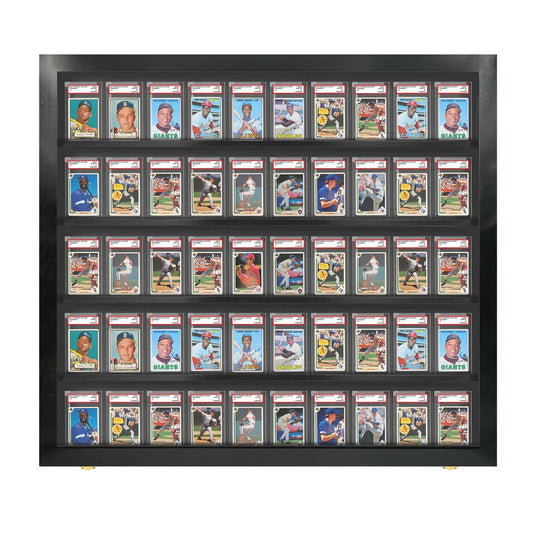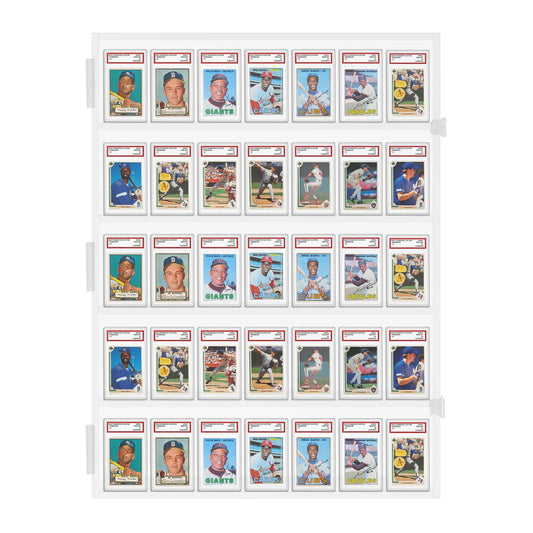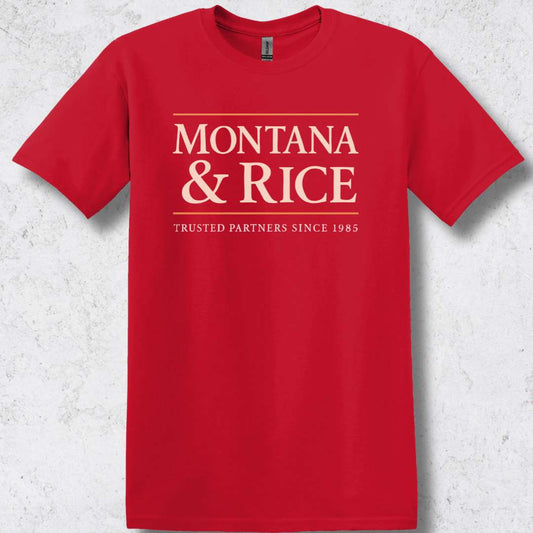
A Beginner's Guide to Trading Card Thickness
If you are new to collecting trading cards, you may be wondering what a 35 point card is or what the thickness of a trading card is. When we talk about 35pt with trading cards, we are referring to the thickness of the card itself. The "pt" stands for points, which is a unit used to measure the thickness of paper or cardstock. In this case, 35pt indicates that the trading card is 35 points thick.
Trying to figure out what thickness each different trading card is can be overwhelming and confusing. When you get that special trading card that you want to preserve, it’s important to know the thickness of the card to make sure you put it in the correct protective case. We will examine some of the more popular trading card brands and their various products to see what thickness the cards are and the type of protection we recommend for them.
In order to prevent damage to the trading card, it is important to make sure the trading card is in the right size protective case. If the protective toploader or magnetic card holder is too small, it can cause damage to the surface of the trading card. It can also be difficult to get a card out of a toploader that is too small. When a trading card is placed in a protective case that is too large, the card may be damaged by moving around too much. If placed in a topload that is too large, the card may fall out of the topload and be damaged.
Here's a breakdown of some of the most popular trading card brands and what size magnetic card holder to use to keep your trading cards protected. *Base Set Thickness (Not for Patch Cards)
| Brand / Product Name |
Card Thick- ness Points |
Suggested
Magnetic Card Holder Size |
| Topps Baseball Series 1 & 2 |
16pt | 35pt |
| Topps Chrome | 25pt | 35pt |
| Topps Chrome Update | 25pt | 35pt |
| Topps Chrome Sapphire | 25pt | 35pt |
| Topps Chrome Sapphire Update | 25pt | 35pt |
| Topps Cosmic Chrome | 25pt | 35pt |
| Topps Chrome Black | 25pt | 35pt |
| Topps Chrome Gilded | 25pt | 35pt |
| Topps Chrome Logofractor | 25pt | 35pt |
| Topps Chrome Stadium Club | 25pt | 35pt |
| Topps Finest | 25pt | 35pt |
| Topps Heritage | 16pt | 35pt |
| Topps Stadium Club | 16pt | 35pt |
| Bowman Chrome | 25pt | 35pt |
| Hockey |
Card Thick- ness Points |
Suggested
Magnetic Card Holder Size |
| Upper Deck Hockey Series 1 & 2 | 24pt | 35pt |
| Upper Deck Extended Series | 24pt | 35pt |
| Upper Deck Hockey Series 1 & 2 | 24pt | 35pt |
| Upper Deck Artifacts Base Set | 24pt | 35pt |
| Upper Deck Black Diamond Base Set | 60pt | 75pt |
| Upper Deck Black Diamond Relic Cards | 140pt | 180pt |
| Upper Deck O-Pee-Chee | 20pt | 35pt |
| Upper Deck O-Pee-Chee Platinum | 27pt | 35pt |
| Upper Deck Parkhurst | 20pt | 35pt |
| Upper Deck Parkhurst Champions | 20pt | 35pt |
| Upper Deck SkyBox Metal Universe | 20pt | 35pt |
| Upper Deck SP Authentic Hockey | 24pt | 35pt |
| Upper Deck SP | 24pt | 35pt |
| Upper Deck SP Game Used Base Set | 40pt | 55pt |
| Upper Deck SPx Base Set | 60pt | 75pt |
| Upper Deck Allure | 27pt | 35pt |
| Upper Deck Credentials | 20pt | 35pt |
| Upper Deck Ice | 20pt | 35pt |
| Upper Deck MVP | 18pt | 35pt |
| Upper Deck Stature Base Set | 60pt | 75pt |
| Upper Deck Trilogy Base Set | 24pt | 35pt |
| Upper Deck Ultimate Collection Base Set | 60pt | 75pt |
| Football/Basketball |
Card Thick- ness Points |
Suggested
Magnetic Card Holder Size |
| Panini Mosaic | 25pt | 35pt |
| Panini Flux | 25pt | 35pt |
| Panini Prizm | 25pt | 35pt |
| Donruss Optic | 25pt | 35pt |
| Trading Card Game (TCG) |
Card Thick- ness Points |
Suggested
Magnetic Card Holder Size |
| Pokemon | 12pt | 20pt |
| Magic the Gathering | 12pt | 20pt |
| Vintage |
Card Thick- ness Points |
Suggested
Magnetic Card Holder Size |
| NBA Hoops (1990) | 13pt | 35pt |
| Donruss Baseball (1994) | 13pt | 35pt |
| Fleer Ultra (1991) | 13pt | 35pt |
| Fleer (1992) | 16pt | 35pt |
| Upper Deck (1992) | 13pt | 35pt |
| Topps Football (1990) | 15pt | 35pt |
The advantage of using a magnetic card holder is that it is very easy to place the card inside without accidentally damaging the card. Also most magnetic card holders are designed with recessed corners to ensure that the card’s corners will not be damaged. Magnetic card holders are a great choice for your more valuable trading cards. Toploaders are also a great option for protecting your trading cards.
Thickness Comparison:
When it comes to trading cards, thickness plays a crucial role in determining their durability and overall feel. Let's take a closer look at the thickness of some popular trading card brands.
Starting with Topps trading cards, they are known for their sturdy construction and quality. On average, Topps cards measure around 20-35 points in thickness (1 point equals 0.001 inch). This provides a solid feel that collectors appreciate.
Moving on to Upper Deck trading cards, they tend to be slightly thicker compared to Topps. Typically ranging between 24-40 points in thickness, Upper Deck delivers cards that have an extra bit of heft without sacrificing flexibility.
Pokemon trading cards are renowned for their unique dimensions as well. On average, Pokemon cards fall within the range of 12-18 points thick. While relatively thinner than some other brands, this doesn't compromise their ability to withstand frequent shuffling during intense battles.
Panini's approach to card thickness varies across different sports and series. Generally speaking, Panini basketball or football cards have similar dimensions as Upper Deck - approximately 24-40 points thick. For Panini soccer or baseball sets, the thickness may vary between 14-30 points depending on the specific collection.
Donruss is another brand worth mentioning when discussing card thicknesses. Donruss baseball or football cards usually share similar dimensions with Panini - around 24-40 points thick for optimal durability and handling.
Let's talk about Magic: The Gathering (MTG) trading cards - beloved by fantasy enthusiasts worldwide! MTG cards typically boast a consistent measurement of about 12-16 points thick across various sets ensuring easy shuffling while maintaining structural integrity.
Now that we've explored the different brands' card thicknesses let's dive into what factors contribute to these variations next! Stay tuned!
Note: All measurements provided above are approximate and can vary slightly based on specific editions or releases.
- Topps trading cards thickness
Quick Take:
Topps - 0.16 inches thick or 16pt
Topps Chrome - 0.25 inches thick or 25pt
Topps Bowman - 0.25 inches thick or 25pt
Topps Bowman Chrome - 0.25 inches or 25pt
Topps trading cards are a popular choice among collectors and enthusiasts alike. One of the factors that contribute to their appeal is their thickness, which adds to the overall quality and durability of these cards.
The thickness of Topps trading cards can vary depending on the specific set or series. On average, they measure around 20 points thick, which is equivalent to 0.02 inches or 0.5 millimeters. This thickness provides a sturdy feel to the card, making it less prone to bending or damage.
The increased thickness also allows for more vibrant and detailed printing on the card's surface. Topps utilizes advanced printing techniques to showcase high-resolution images and intricate designs that truly stand out.
Furthermore, this thicker construction ensures that Topps trading cards can withstand regular handling without easily wearing down over time. Whether you're shuffling through your collection or showcasing them in protective sleeves, you can trust that these cards will maintain their integrity.
Topps trading cards' moderate thickness strikes a perfect balance between being substantial enough for durability while still maintaining a sleek appearance. It's no wonder why collectors continue to gravitate towards these timeless pieces of memorabilia!
- Upper Deck trading cards thickness
Quick Take:
Upper Deck Series - 0.25 inches or 25pt
Upper Deck SP - 0.25 inches or 25pt
Upper Deck trading cards are a popular choice among collectors and enthusiasts alike. One important aspect to consider when it comes to these cards is their thickness. The thickness of Upper Deck trading cards can vary depending on several factors.
The material used for the card plays a significant role in determining its thickness. Upper Deck often uses high-quality cardstock, which adds to the overall sturdiness and durability of their cards. This thicker material helps prevent bending or warping, ensuring that your collection remains in pristine condition.
Another factor that affects the thickness of Upper Deck trading cards is the printing process. The company utilizes advanced printing techniques that result in vibrant colors and intricate designs on each card. These processes may add an additional layer or coating, contributing to the overall thickness.
It's worth noting that while Upper Deck trading cards tend to be thicker compared to other brands, this does not compromise their ability to fit into standard-sized protective sleeves or display cases. So you can showcase your collection without any worries!
Upper Deck trading cards are known for their sturdy construction and impressive quality. Their use of high-quality materials and advanced printing techniques contribute to their slightly thicker nature compared to other brands. Whether you're a serious collector or just starting out, investing in these well-crafted trading cards is always a great choice!
- Pokemon trading cards thickness
Quick Take:
Pokemon Standard Card - 0.12 inches or 12pt
When it comes to collecting trading cards, Pokemon is undoubtedly one of the most popular choices among enthusiasts. But have you ever wondered about the thickness of these iconic cards? Well, let's delve into this fascinating aspect!
Pokemon trading cards are known for their sturdy construction and durability. The thickness of a typical Pokemon card ranges from 0.25mm to 0.32mm. This may seem relatively thin compared to other trading card brands, but don't underestimate the strength and resilience packed within those few millimeters!
The material used in Pokemon cards plays a significant role in determining their thickness. These cards are made from high-quality paper stock that strikes a perfect balance between flexibility and robustness.
Moreover, the printing process employed by The Pokémon Company ensures vibrant colors and crisp designs while maintaining an optimal thickness for easy shuffling during gameplay.
So why does card thickness matter? Well, thicker cards tend to be more resistant to wear and tear over time. They can withstand frequent handling without losing their structural integrity or becoming easily damaged.
If you're curious about measuring the thickness of your own Pokemon cards, simply use a precision caliper or ruler designed for such purposes. It's always satisfying to see how well-constructed these beloved collectibles truly are!
In conclusion (oops!), knowing the thickness of your Pokemon trading cards not only adds another layer of appreciation but also helps ensure proper storage and preservation techniques - keeping them safe for many battles yet to come!
- Panini trading cards thickness
Quick Take:
Panini Mosaic - 0.25 inches or 25pt
Panini Flux - 0.25 inches or 25pt
Panini Prizm - 0.25 inches or 25pt
Panini trading cards are a popular choice among collectors, known for their high-quality designs and limited edition releases. When it comes to thickness, Panini trading cards fall within the standard range for most trading card brands.
The exact thickness of Panini trading cards can vary slightly depending on the specific set or collection. On average, Panini trading cards have a thickness of approximately 12-20 points. This means that they measure between 0.012 and 0.020 inches in thickness.
The material used for Panini trading cards plays a significant role in determining their overall thickness. Most Panini cards are made from sturdy cardstock, which gives them durability and longevity.
In addition to the materials used, the printing process also contributes to the final thickness of Panini trading cards. The ink layers applied during printing can add some extra bulk to the overall card structure.
It's important to note that while card thickness is an essential factor for collectors, it doesn't necessarily indicate higher quality or value. Some collectors prefer thinner cards as they are easier to store and display without taking up too much space.
Panini trading cards offer a solid level of thickness that ensures their durability while maintaining an appealing size for collectors to handle and showcase with pride!
- Donruss trading cards thickness
Quick Take:
Donruss Opic - 0.25 inches or 25pt
Donruss trading cards are a popular choice among collectors and enthusiasts. When it comes to their thickness, Donruss trading cards generally fall within the range of 20-30 points or 0.5-0.7 millimeters. This makes them slightly thicker than some other trading card brands.
The thickness of Donruss trading cards is influenced by various factors, including the material used for the cards and the printing process employed. Typically, these cards are made from high-quality cardstock that provides durability and longevity.
One reason why collectors appreciate thicker trading cards like Donruss is because they tend to feel more substantial in hand. The added thickness can evoke a sense of value and prestige, enhancing the overall collecting experience.
Measuring card thickness is fairly straightforward; you can use a micrometer or caliper to get an accurate measurement in millimeters or points.
If you're a fan of Donruss trading cards, you'll be pleased with their slightly thicker profile compared to some other brands on the market. The extra heft adds to their appeal and collectability for many enthusiasts out there!
- MTG trading cards thickness
Quick Take:
MTG Standard Card - 0.12 inches or 12pt
MTG trading cards, also known as Magic: The Gathering cards, have a unique thickness that sets them apart from other trading card games. These cards are renowned for their durability and quality. The thickness of MTG cards is approximately 12-14 mils (0.012-0.014 inches), which provides a sturdy feel when holding them in your hands.
The thicker construction of MTG cards ensures they can withstand frequent shuffling and gameplay without easily bending or tearing. This is especially important considering the competitive nature of the game and the countless hours players spend handling their decks.
The material used for MTG cards contributes to their thickness and resilience. They are typically made from layers of high-quality paper stock coated with a glossy finish, giving them a smooth texture that enhances the overall playing experience.
Another factor influencing the thickness of MTG cards is the printing process itself. The intricate artwork and vibrant colors on each card require precision printing techniques to achieve optimal visual impact. Consequently, this adds to the overall thickness of these collectible pieces.
Whether you're an avid Magic: The Gathering player or a passionate collector, understanding the thickness of MTG trading cards can help you appreciate their exceptional craftsmanship even more. So next time you hold one in your hand, take a moment to admire its sturdiness and remarkable attention to detail!
Factors affecting card thickness:
Factors Affecting Card Thickness:
When it comes to trading cards, their thickness can vary depending on several factors. One of the primary factors that affect card thickness is the material used for the card itself. Different manufacturers may use different materials, such as paper or plastic, which can significantly impact the overall thickness.
Another factor that plays a role in determining card thickness is the printing process employed by each manufacturer. Some companies utilize high-quality printing techniques that result in thicker cards, while others may opt for more cost-effective methods that produce thinner cards.
Additionally, the design and artwork featured on a trading card can also influence its thickness. Cards with intricate designs or multiple layers may require thicker materials to ensure durability and visual appeal.
It's worth noting that certain types of trading cards, like Pokémon or Magic: The Gathering cards, often have specific standards set by their respective game publishers. These standards dictate not only the dimensions but also the desired level of stiffness and flexibility for optimal gameplay.
In conclusion (sorry!), there are various factors at play when it comes to determining trading card thickness. Material choice, printing processes used, and even design considerations all contribute to this important aspect of collectible cards. So next time you hold a trading card in your hand, take a moment to appreciate how these factors come together to create an enjoyable gaming experience!
- Material used for the card
When it comes to trading cards, the material used for the card itself plays a significant role in determining its thickness. Different manufacturers may use different materials, resulting in variations in thickness.
Topps trading cards are typically made of high-quality cardboard or paper stock. This material provides durability and ensures that the cards can withstand regular handling without bending or tearing easily.
Upper Deck trading cards are known for their premium quality. They are often made with thicker cardstock, which gives them a sturdier feel compared to other brands. This added thickness also helps protect the card from wear and tear over time.
Pokemon trading cards are printed on a special type of coated paper stock called "Pokémon TCG Card Stock." This material is designed to be durable yet flexible enough to maintain its shape during gameplay. The thickness of Pokemon cards falls somewhere between Topps and Upper Deck.
Panini trading cards vary in terms of materials used depending on the specific product line or series. Some Panini sets feature thicker cardboard-like stock, while others may have thinner and more flexible options.
Donruss trading cards often utilize a combination of materials such as paperboard and foil stamping techniques to create unique designs and textures. As a result, Donruss cards can have varying degrees of thickness depending on these design elements.
MTG (Magic: The Gathering) trading cards are crafted using specially formulated cardstock that undergoes multiple layers during manufacturing. These layers contribute to their overall thickness while maintaining flexibility for easy shuffling and gameplay.
Each brand's choice of materials greatly affects the thickness of their respective trading card products. Whether you prefer sturdy cardboard-like stocks or more flexible options, there is likely a brand out there that suits your preferences!
- Printing process
The printing process plays a significant role in determining the thickness of trading cards. Different printing techniques can result in variations in card thickness.
One common printing process used for trading cards is offset printing. This method involves transferring ink from a plate to a rubber blanket, which then transfers the image onto the cardstock. Offset printing typically produces high-quality prints with vibrant colors and fine details.
Another popular technique is digital printing, which uses digital files to directly print images onto the cardstock. Digital printing offers quick turnaround times and allows for more flexibility in customizing designs. However, it may not achieve the same level of color saturation as offset printing.
Furthermore, some trading cards incorporate special finishes or coatings during the manufacturing process. These finishes can add texture or protection to the cards but may slightly increase their overall thickness.
Understanding the different types of printing processes used for trading cards helps collectors appreciate how various factors contribute to their thickness and visual appeal.
Importance of Thickness in Trading Cards
As a trading card enthusiast, you may have noticed that the thickness of a card can vary from one brand to another. But why does thickness matter in trading cards? Well, let's dive into it!
The thickness of a trading card can affect its durability and longevity. Thicker cards are generally more resistant to wear and tear, making them less likely to get damaged during handling or storage.
Moreover, thicker cards often provide a more premium feel. When you hold a thick trading card in your hands, it gives off an impression of quality and value. It adds substance to your collection and makes each card feel special.
Additionally, thicker cards tend to be easier to handle and shuffle. They offer better grip when playing games or organizing your collection, enhancing the overall user experience.
Furthermore, some collectors prefer thicker cards because they are less prone to bending or warping over time. This is especially important for those who invest in rare or valuable cards that they want to preserve in pristine condition.
Last but not least, the importance of thickness also ties into aesthetic appeal. Thicker cards often allow for more detailed artwork and designs due to their sturdiness. The depth provided by increased thickness can enhance the visual impact of the images printed on the surface.
In conclusion (Oops! Sorry about that!), while there isn't a right or wrong answer when it comes to trading card thickness preference since it varies from person-to-person; understanding its significance helps us appreciate these collectibles even more! So next time you add new additions to your collection, take note of their thickness as well – it might just make all the difference!
How to Measure Card Thickness
Measuring the thickness of trading cards may seem like a trivial task, but for collectors and enthusiasts, it is an essential skill. To accurately measure the thickness of a card, you will need a precision caliper or micrometer. These tools allow you to measure even the slightest variances in thickness with great accuracy.
Start by placing your trading card between the jaws of the caliper or micrometer. Gently close the instrument until it makes contact with both sides of the card. Take note of the measurement displayed on the tool's digital display or scale. This measurement represents the thickness of your trading card.
It's important to keep in mind that different types and brands of trading cards may have slightly different thicknesses. Therefore, it is recommended to take measurements from multiple cards within each collection to get an average value.
By knowing how to measure card thickness accurately, collectors can determine if their cards meet industry standards and specifications. Additionally, this knowledge can be useful when selecting protective sleeves or storage solutions for their valuable collections.
Remember that while measuring card thickness might not be as exciting as collecting them, it plays a crucial role in preserving and protecting these cherished items for years to come!
Conclusion
The thickness of trading cards can vary depending on the brand and type of card. Topps trading cards are typically around 20-30 point thick, while Upper Deck cards tend to be slightly thicker at around 24-35 point. Pokemon trading cards have a standard thickness of approximately 12-16 point, while Panini and Donruss cards fall within the range of 24-32 point.
MTG trading cards stand out with their unique thickness measurement in millimeters. They are commonly found in three different sizes: Standard (0.305 mm), Premium (0.330 mm), and Foil/Mythic Rare (0.355 mm).
The thickness of these trading cards is influenced by various factors such as the materials used for production and the printing process employed by each company.
The material used plays a crucial role in determining the overall thickness of the card. Different brands may opt for different types of cardstock or paperboard that can affect its rigidity.
Moreover, the printing process also contributes to variations in card thickness. Some companies may use high-quality digital printing methods that result in thinner yet durable cards, while others might prefer traditional offset or lithographic printing techniques that create slightly thicker ones.
Understanding card thickness is essential not only for collectors but also for players who want to ensure durability during gameplay and protection against wear and tear over time.
To measure card thickness accurately, you can use a micrometer tool or caliper which provides precise measurements down to fractions of millimeters or points.
Remember that keeping your valuable trading cards protected requires proper storage solutions like top loaders or sleeves designed specifically for their size and dimensions.
Knowing the average thicknesses associated with popular trading card brands allows collectors and enthusiasts alike to make informed decisions when buying, storing, displaying, or playing with these cherished items from their favorite franchises!











